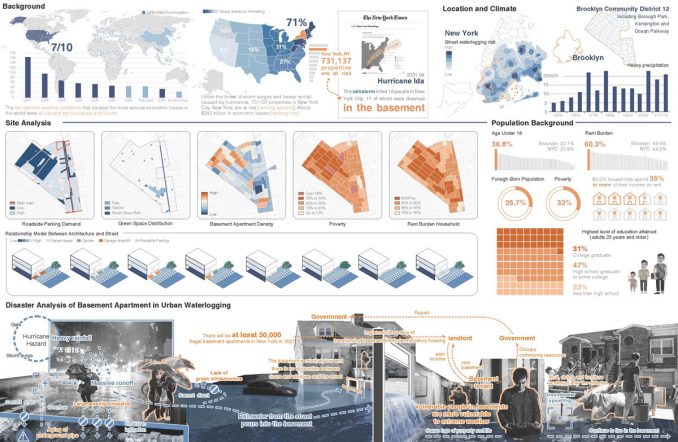
Hurricanes are one of the most threatening natural disasters nowadays. With climate change, hurricanes are increasing yearly, greatly impacting life and property in the United States. Unfortunately, an urban waterlogging from Hurricane Ida killed 16 people in New York in 2021, and most of those who died were low-income residents of basement apartments. It’s found that climate crises are linked to climate justice. New York City is the most expensive city in the U.S. to live in, and that results in housing disparities. More seriously, the arrival of the climate crisis is finally challenging the reality of the city’s gross housing disparities. As one of the vulnerable groups in the metropolis, basement apartment tenants will take risks from extreme weather. Rainstorms caused by hurricanes exposed the city cannot house its most vulnerable people.
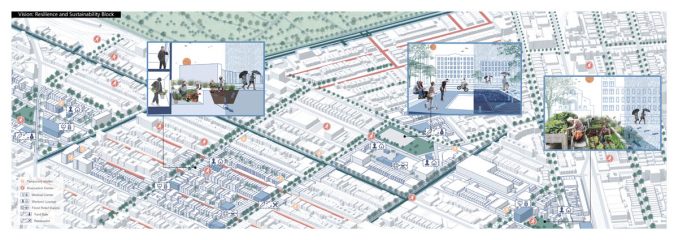
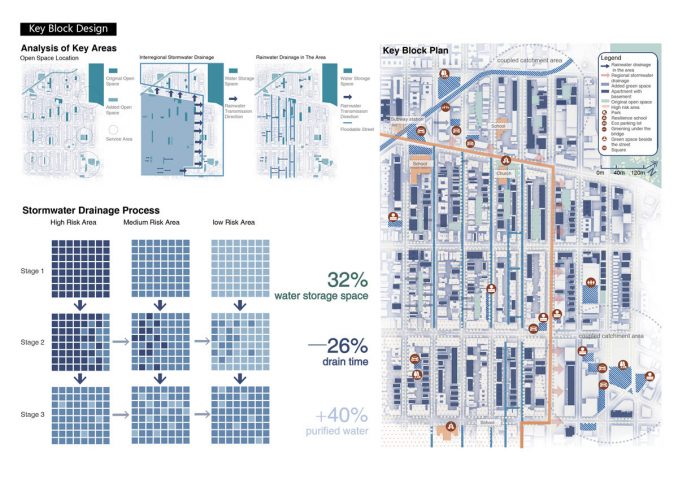
Drowning in Disparity focuses on the fact that we need to deal with climate change, and tries to figure out how to make it safe from the perspective of vulnerable groups. The design aims to develop flood intervention strategies and give corresponding priority to vulnerable groups. With thoughtful mapping analysis, the study area was chosen in District 12, Brooklyn, New York, which has a high risk of urban waterlogging and a relatively low average income.
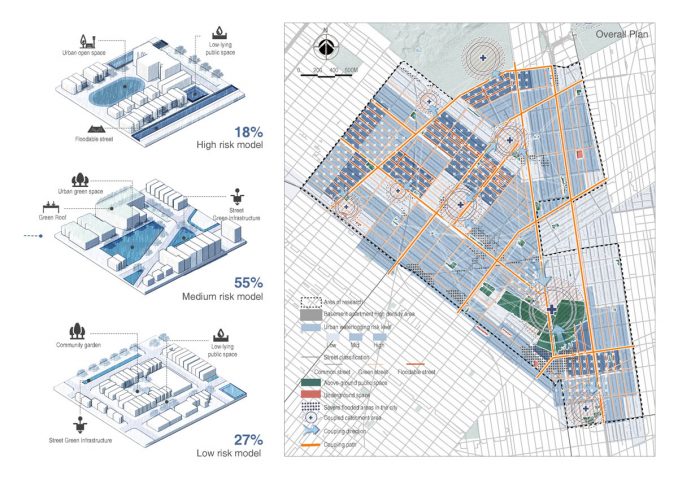
In planning, we prioritized addressing the following three crises caused by storms: water that rushes into basement apartments, water that pollutes the city, and water that interferes with emergency functions. The core strategy is “Keep Stormwater on Street”. Based on urban waterlogging risk assessment, the process “Precaution – Emergency Reaction – Restoration” is proposed to intervene and use floods sustainably, corresponding to the full-time planning of “before the stormwater, during the stormwater, and after the stormwater.
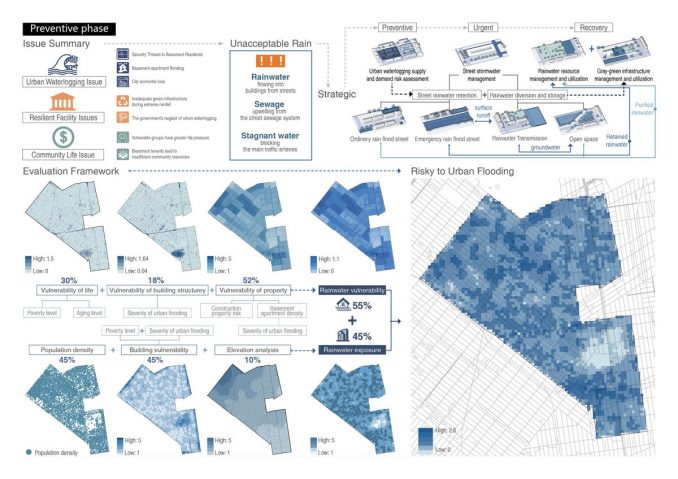
1.Precaution
Based on the traditional rainstorm analysis, we add the factors of the basement apartments and establish an urban waterlogging risk assessment framework for the basement apartments. Furthermore, we plan emergency rescue systems, block stormwater management systems and interregional coupling strategies to deal with extreme rainstorms.
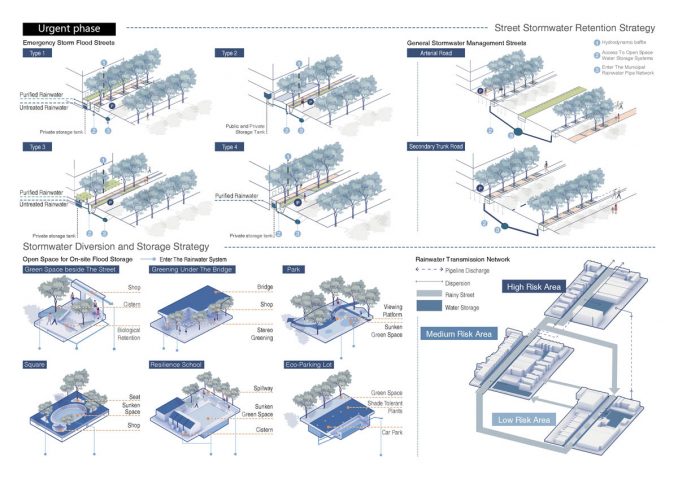
2.Emergency reaction
On the one hand, the streets and open spaces with flood storage functions are used to transport and collect rainwater for short-term storage. On the other hand, the flood pressure balance between high and low-risk areas is adjusted through the interregional coupling system to reduce the loss of property and life caused by rainwater pouring into the basements.
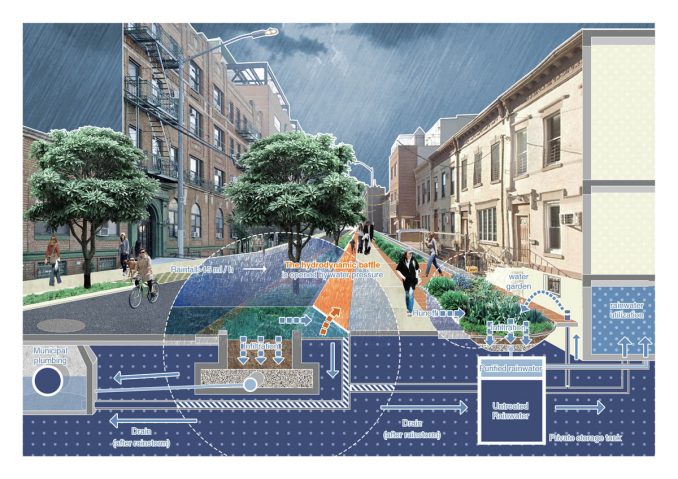
3.Restoration
Firstly, the short-term stored rainwater should be ensured to deal with in the first time. Then, the collected rainwater and gray-green infrastructure can be used in daily life after the hurricane, which will bring economic benefits to basement residents and more value to society.
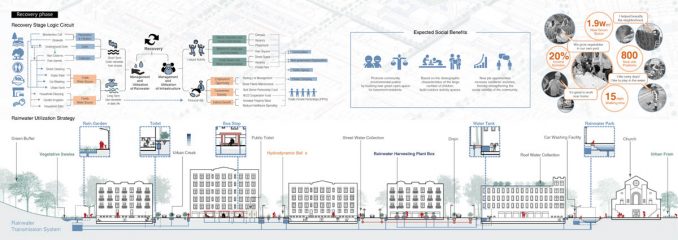
This project strategically explores a way to prevent and control flood for basement residents, to reduce the property and life losses caused by urban waterlogging.
Student Project | Drowning in Disparity | Shikai Xu & Qingyu Li & Bosong Shen & Linbing Yu
Project Name: Drowning in Disparity-Basement Waterlogging Prevention Program
Students Name: Shikai Xu, Qingyu Li, Bosong Shen, Linbing Yu
School: Chongqing University
Supervisor: Xiangbin Xu, Zhongde Wang
